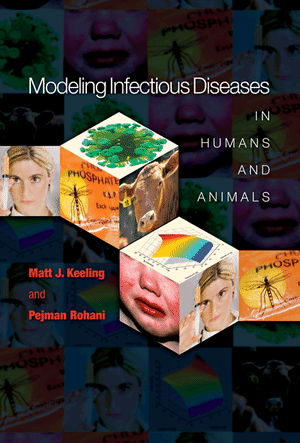|
Consider a “closed
population”
without demographics (no births, deaths,
or migration). The scenario we have in mind is a large naive population
into which a low level of infectious agent is introduced and where the
resulting epidemic occurs sufficiently quickly that
demographic processes are not influential. We also assume homogeneous
mixing, whereby intricacies affecting the pattern of contacts are
discarded, yielding βSI as
the transmission term. Given the premise that underlying
epidemiological rates are constant, we get the following SIR equations:
Parameters
| β |
is the transmission
rate and incorporates the encounter rate between susceptible and
infectious individuals together with the probability of transmission. |
| γ |
is
called the removal
or recovery rate, though often we are more interested in its reciprocal
(1/γ) which determines the average infectious period. |
| S(0) |
is
the initial
proportion of the population that are susceptible. |
| I(0) |
is
the initial
proportion of the population that are infectious. |
All rates are
specified
in days.
Requirements.
All parameters must be positive, and S(0)+I(0) ≤ 1
Files
C++ Program, Python Program, Fortran Program, Parameters, MATLAB Code.
|


